- Anatomical terminology
- Skeletal system
- Joints
- Muscles
-
Head muscles
- Extraocular muscles
-
Facial muscles
- Occipitofrontalis
- Corrugator supercilii
- Depressor supercilii
- Orbicularis oculi
- Malaris
- Buccinator
- Orbicularis oris
- Mentalis
- Depressor anguli oris
- Depressor labii inferioris
- Levator anguli oris
- Levator labii superioris
- Risorius
- Zygomaticus major
- Zygomaticus minor
- Levator labii superioris alaeque nasi
- Nasalis
- Procerus
- Depressor septi nasi
- Compressor narium minor
- Dilator naris anterior
- Muscles of mastication
- Neck muscles
- Muscles of upper limb
- Thoracic muscles
- Muscles of back
- Muscles of lower limb
-
Head muscles
- Heart
- Blood vessels
- Lymphatic system
- Nervous system
- Respiratory system
- Digestive system
- Urinary system
- Female reproductive system
- Male reproductive system
- Endocrine glands
- Eye
- Ear
Orbicularis oculi
The orbicularis oculi (Latin: musculus orbicularis oculi) is a circular-shaped facial muscle located around the opening of the eye. This muscle is classified as the circumorbital and palpebral muscle. Among other functions, the orbicularis oculi muscle is involved in closing the eyelid.
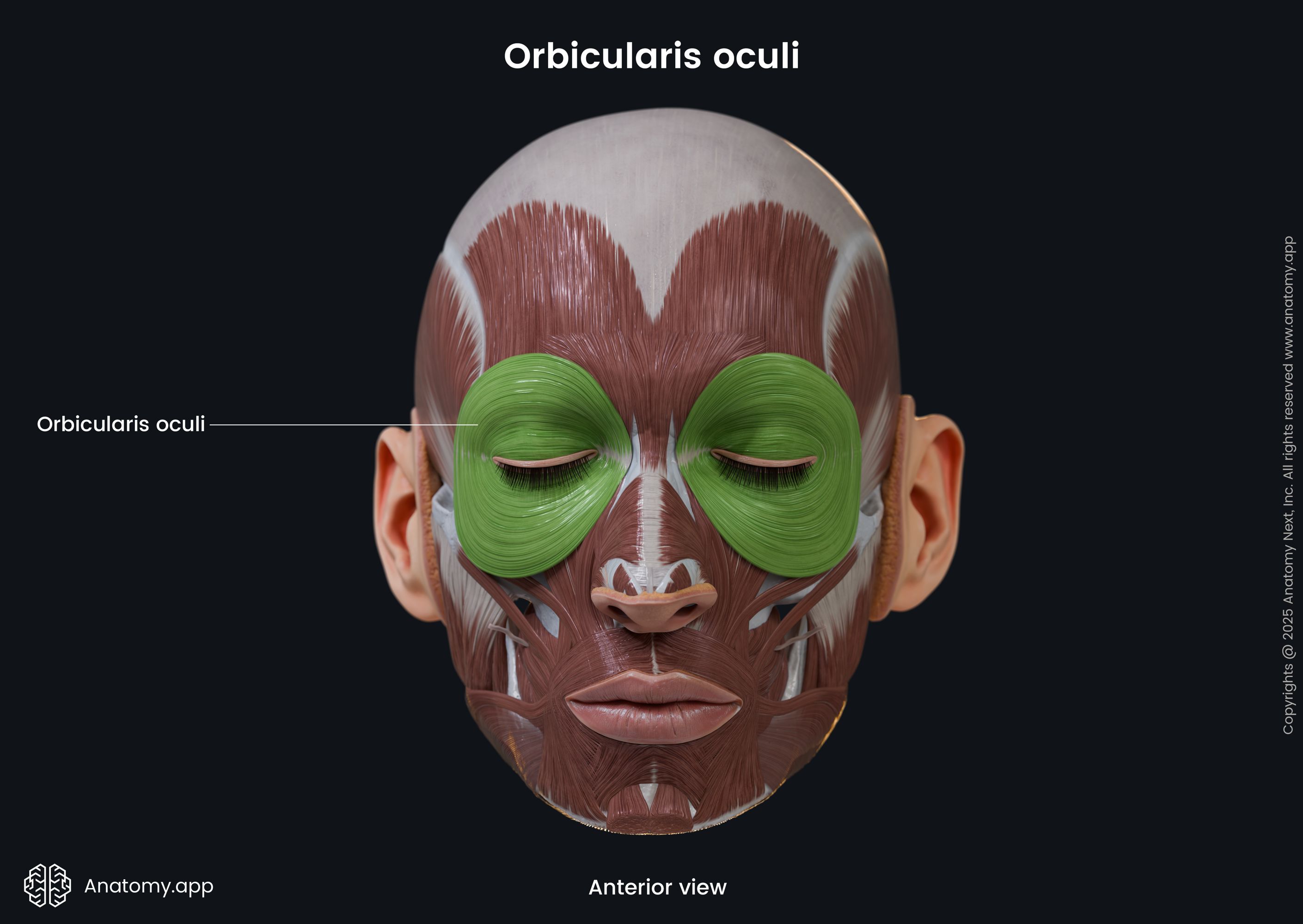
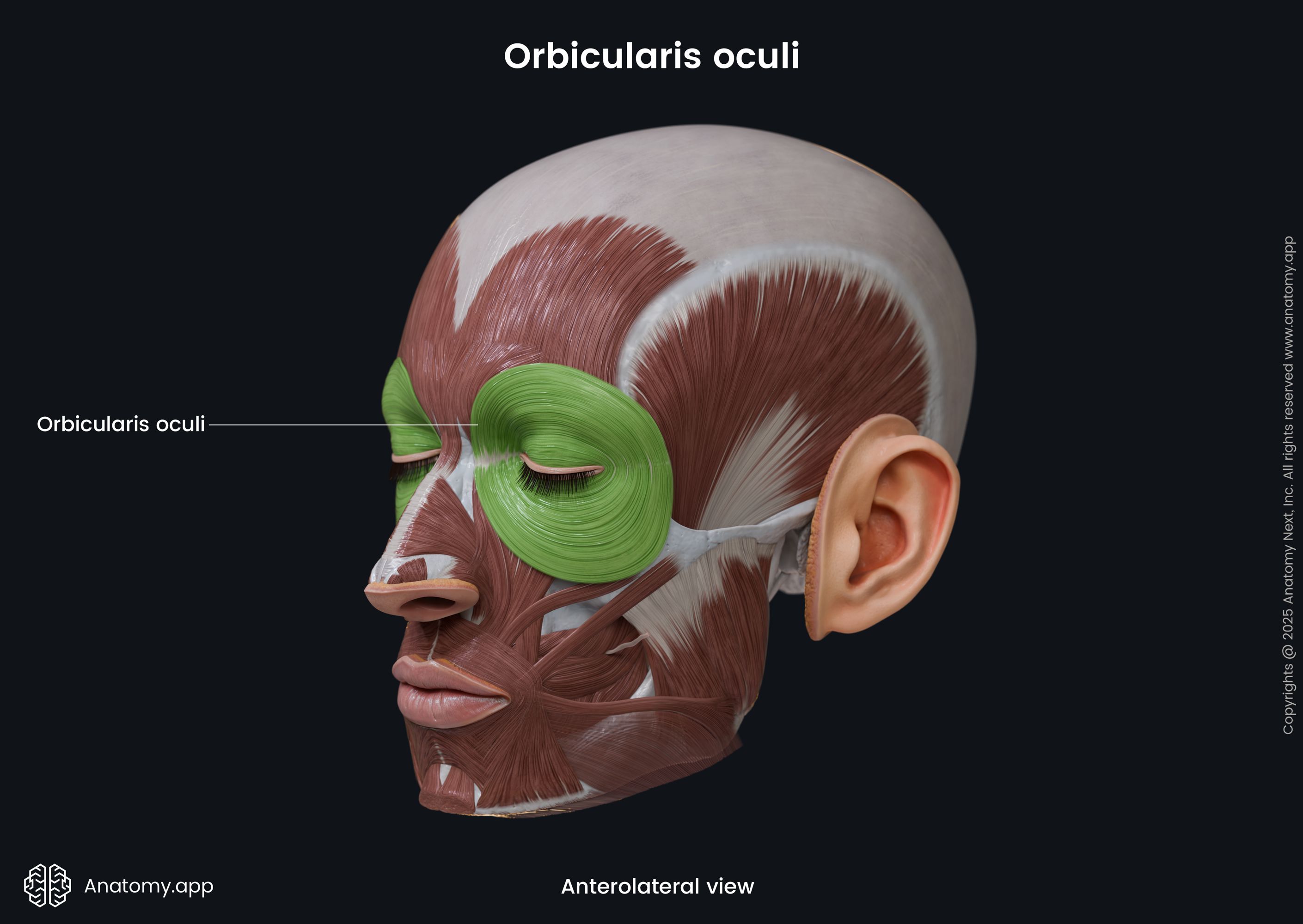

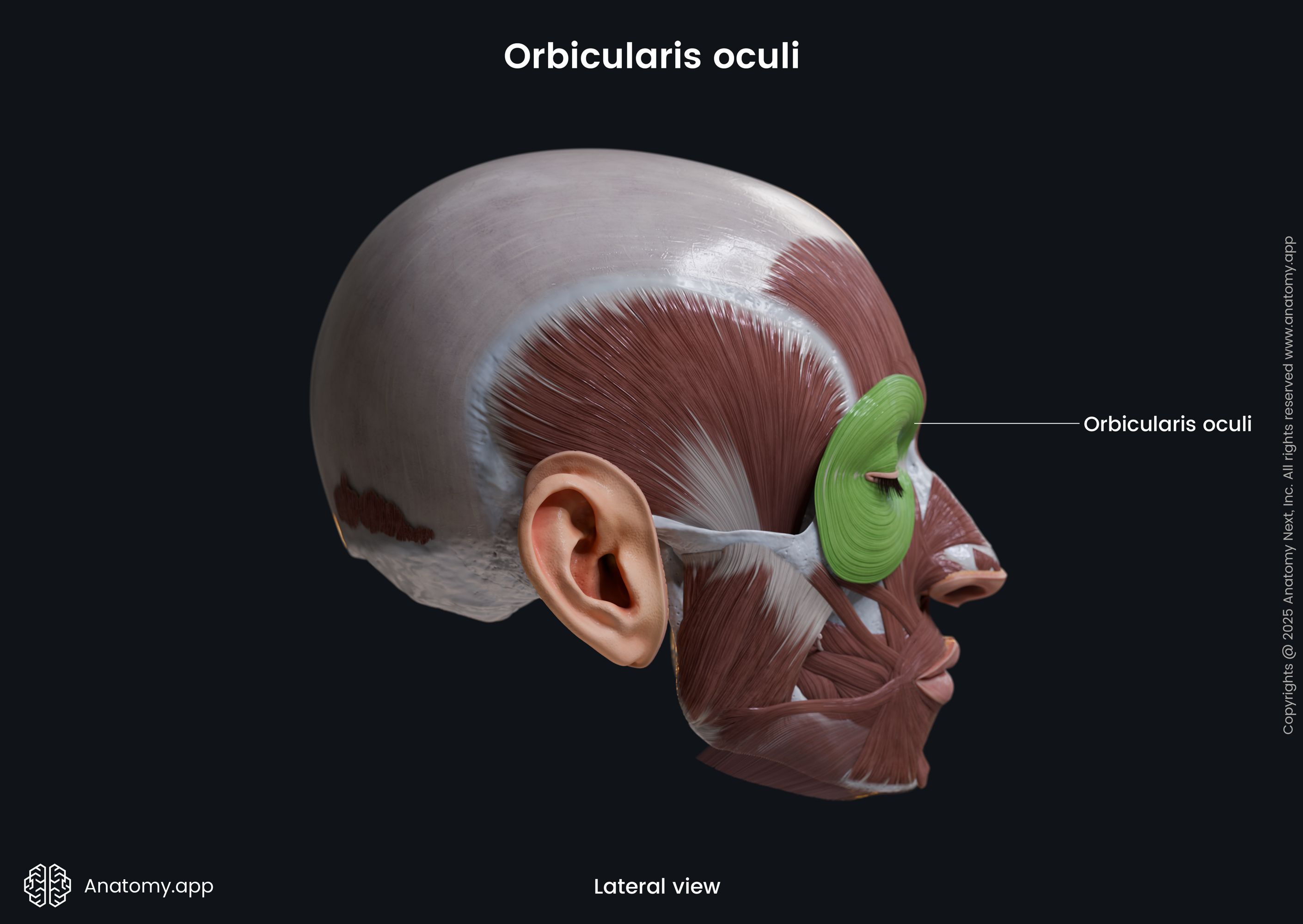

The orbicularis oculi is composed of three parts - orbital, palpebral and lacrimal. The orbital part lies circularly around the orbital opening. The palpebral part is situated in the upper and lower eyelids, while the lacrimal part lies most deeply.
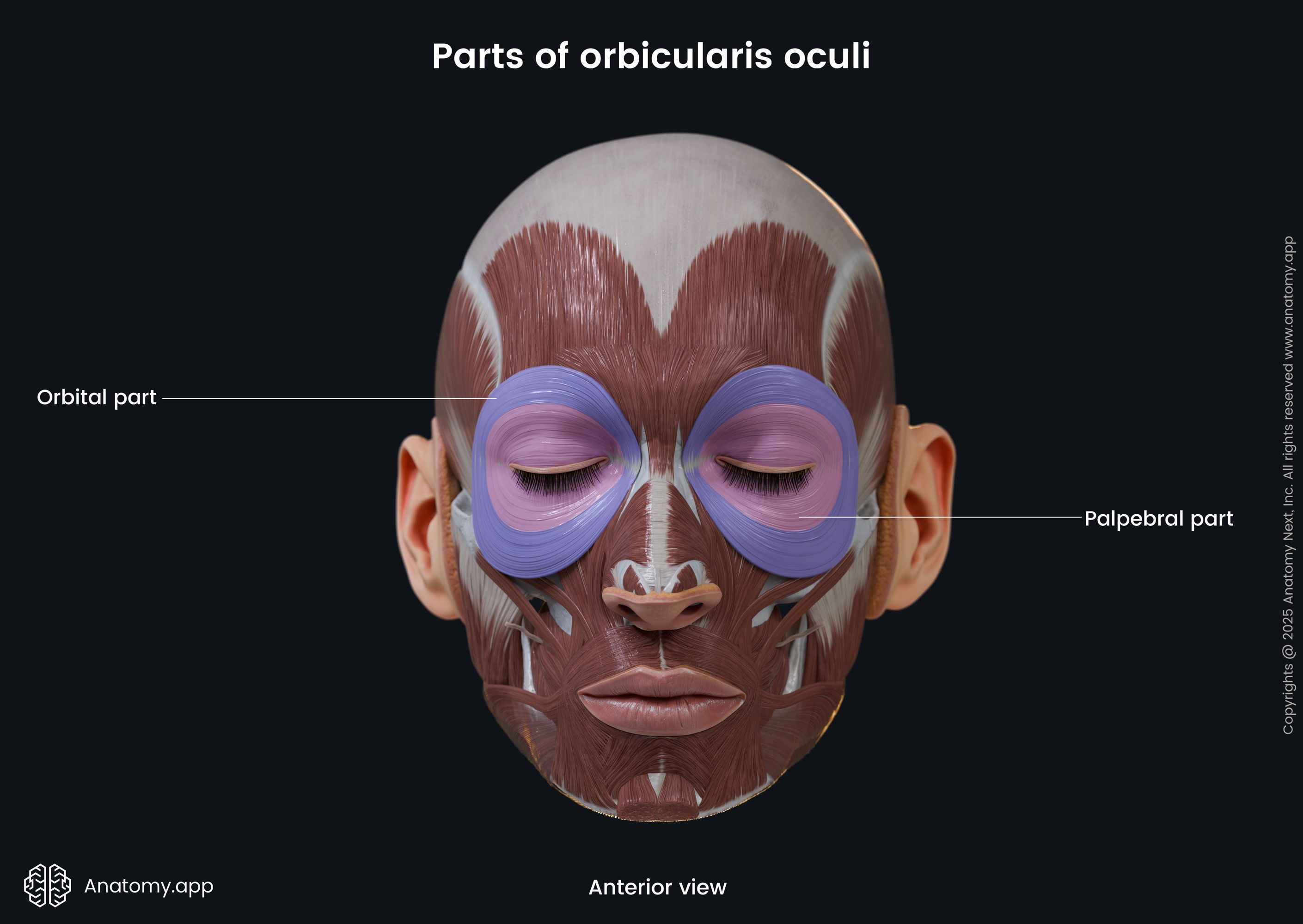
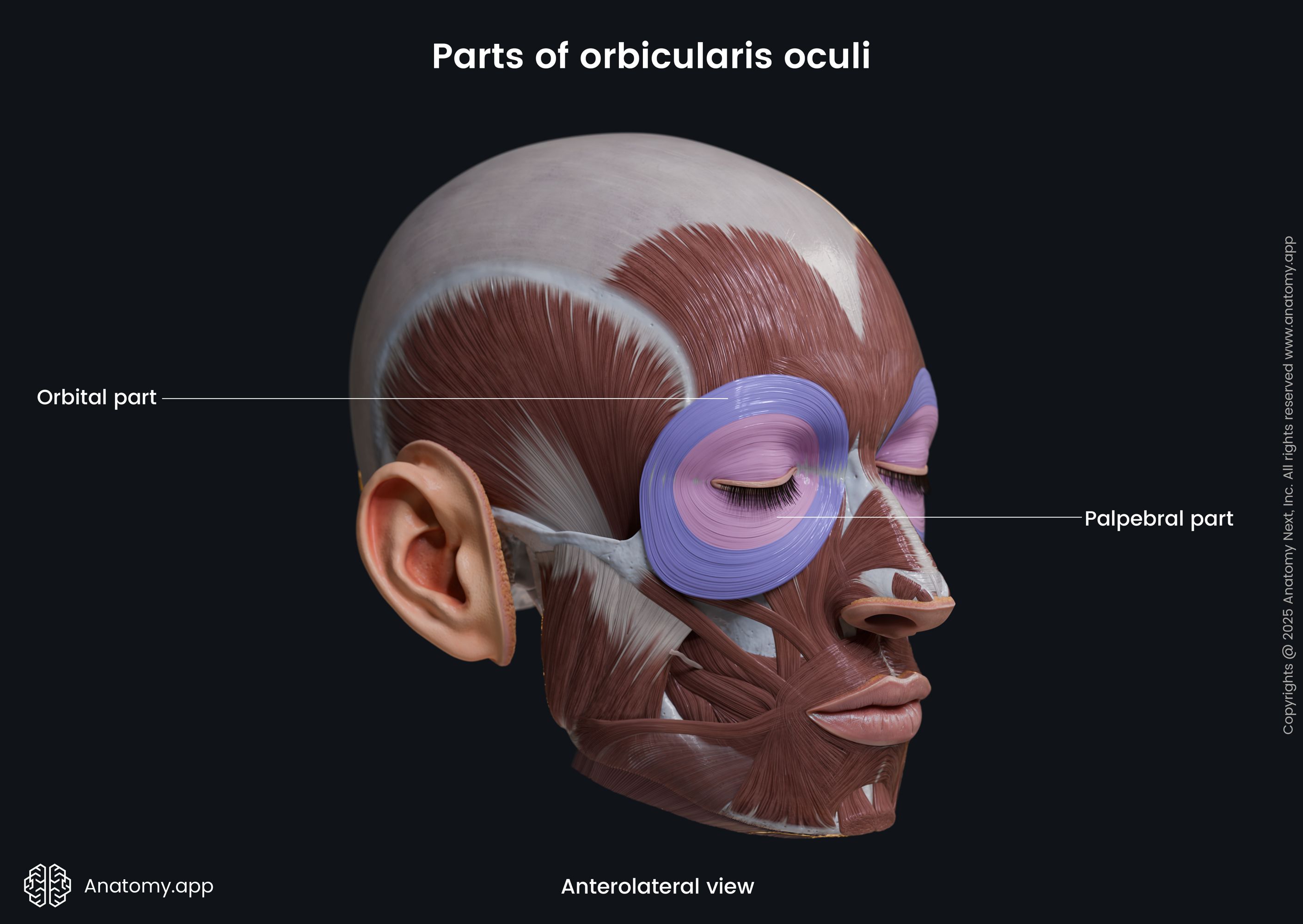

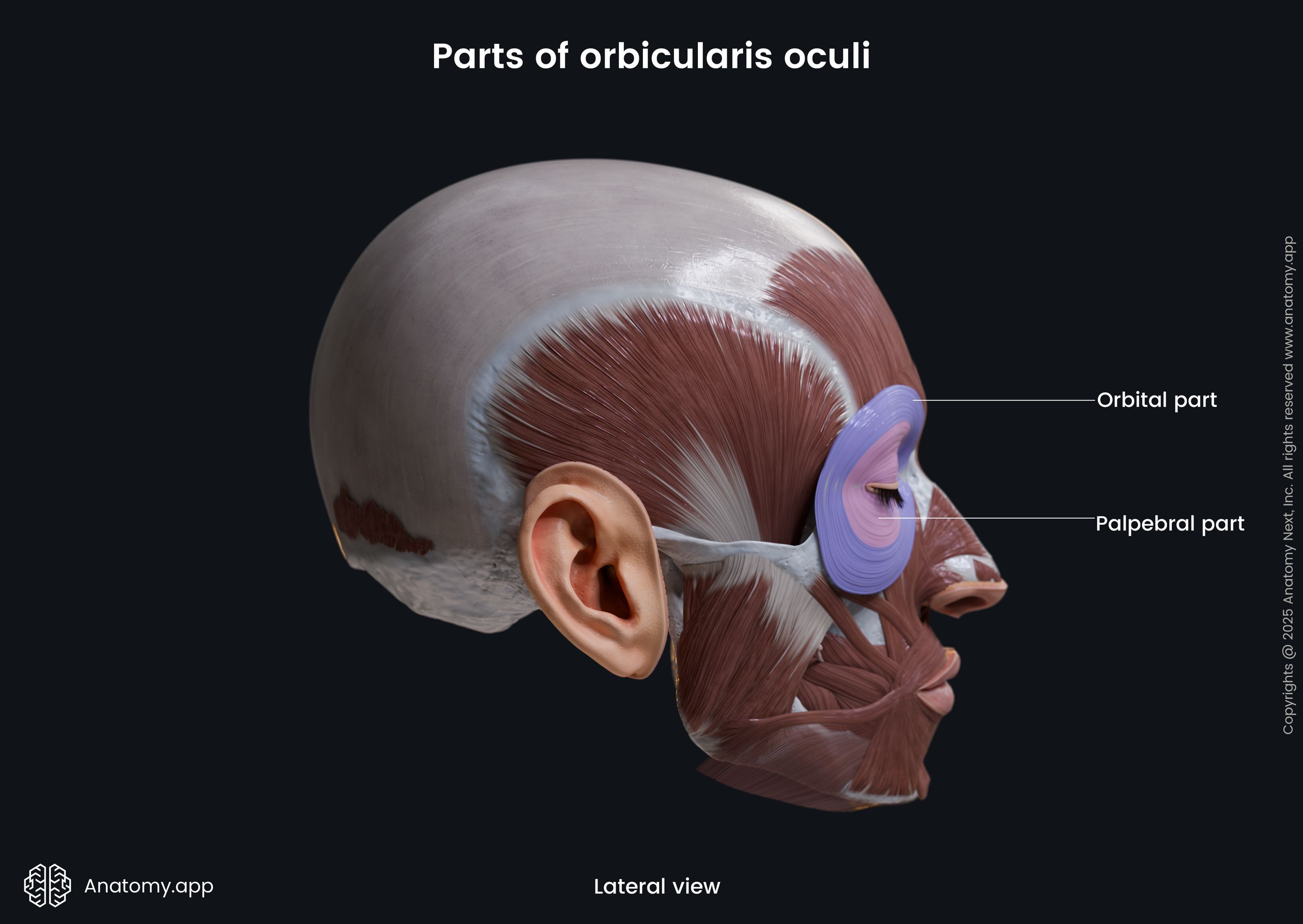
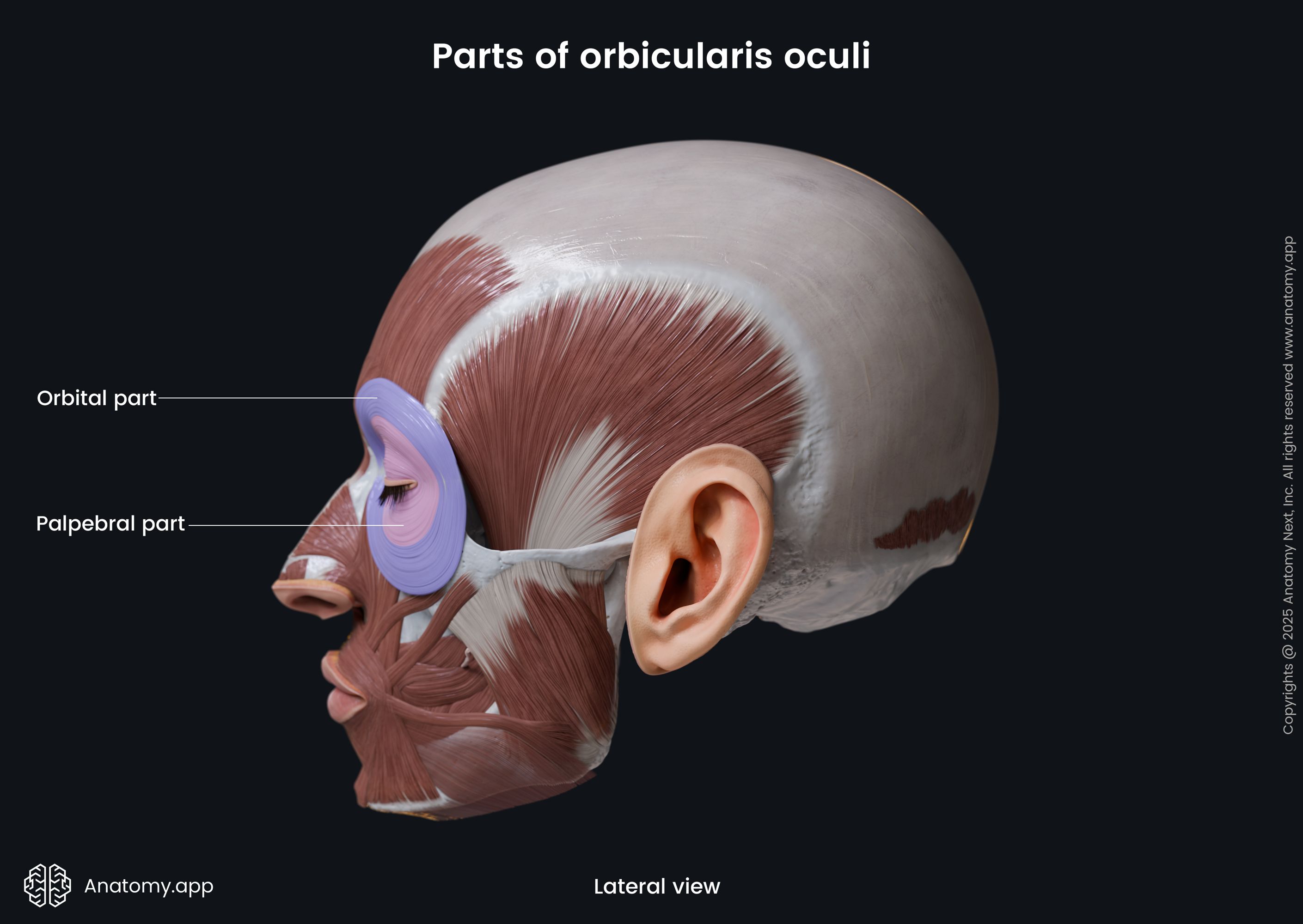

All parts of the orbicularis oculi muscle are innervated by the branches of the facial nerve (CN VII). The arterial blood supply of this muscle is provided by the branches of the facial, superficial temporal, maxillary and ophthalmic arteries.